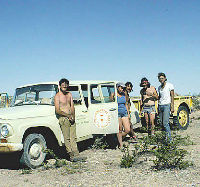
The field crew with their vehicle.
Click images to enlarge
|
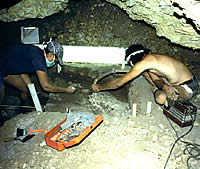
A vacuum cleaner was essential for removing the fine dust. |
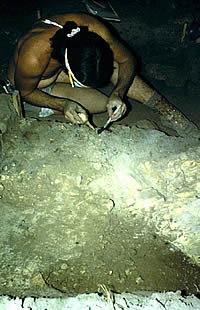
An archaeologist using a fine
brush to recover artifacts. |
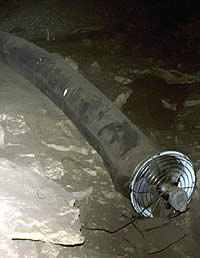
View of the fan system
used to
vent the cave and remove dust.
|
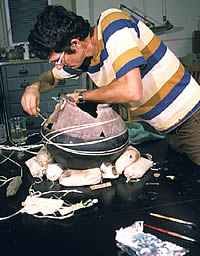
Hamilton reconstructs the large Mata
Red-on-Brown jar.
|
|
Work at Granado Cave was done in stages over
a three-year period, with preparatory work devoted to mapping
and reconnaissance prior to the testing phase. As in most
archeological research, the most time-consuming phase involved
laboratory work and analysis.
Mapping
A preliminary map was drafted in July 1976 by
Hamilton and James Malone of the Texas Historical Commission.
Ronald Fiesler and three associates from the Texas Speleological
Society created a more accurate map of the cave's interior
in November 1976. A transit was used to map in excavation
units, although it was difficult to read the angles and scales
due to the almost complete darkness of the interior of the
cave.
Excavation
Test excavations were conducted in November
1976 around the area from which burials had been removed by
Mr. Granado. Hamilton returned in 1978 with a crew of four
archeologists to conduct formal excavations. A theodolite
with battery-operated lights on all the scales was adopted.
Also, eight fluorescent light fixtures were suspended from
the cave ceiling and run from a gas-powered electric generator.
Excavation units consisted of 1-m squares and profiles were
recorded for each unit.
All fill was screened through
6-mm mesh. To reduce the amount of dust in
the cave as a result of screening, a large
smoke-evacuating fan was installed. It was
vented to the outside with a length of tubular
plastic.
Laboratory Work
After the excavation, work
continued in the laboratory, as site maps
were drawn and data were analyzed. Tasks included
the reconstruction of a large Mata Red-on-Brown
ceramic jar from over a dozen sherds. The
jar was found by Mr. Frank Granado, although
additional pieces were recovered during the
archaeological excavation.
Human coprolites were studied to gain insight
regarding the diet of the prehistoric inhabitants of Granado
Cave and Caldwell Shelter. A large variety of local plants
were eaten, with grass seeds and cactus playing significant
roles, along with mesquite, waterleaf, peas, wild grapes,
mint and sunflower. Mormon tea (Ephedra sp.) may have
been consumed as an antidiarrhetic to counteract the magnesium-sulfate-contaminated
water ubiquitous across the region.
An economic pollen spectrum characteristic of
the Castile Phase was developed and compared to the pollen
spectrum of the Lower Pecos and Chihuahua regions. Bones from
rodents, rabbits and birds were also found, indicating that
these animals were consumed.
|
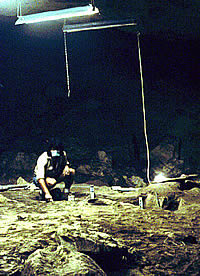
Archeologists at work inside the
cave.
|
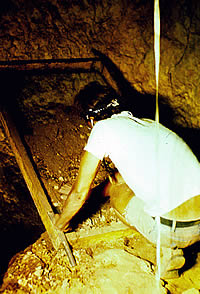
Removed matrices were carefully screened
for artifacts, seeds and other materials. |
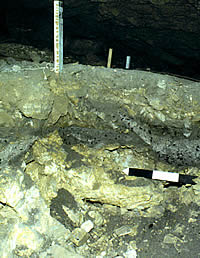
A hearth feature in Unit 4. |
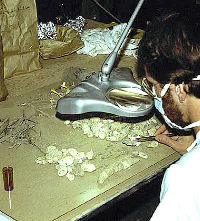
A researcher collects pollen and
seeds from a human coprolite. |
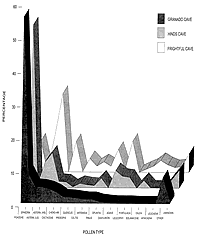
Click to view percentages
of pollen types. |
|